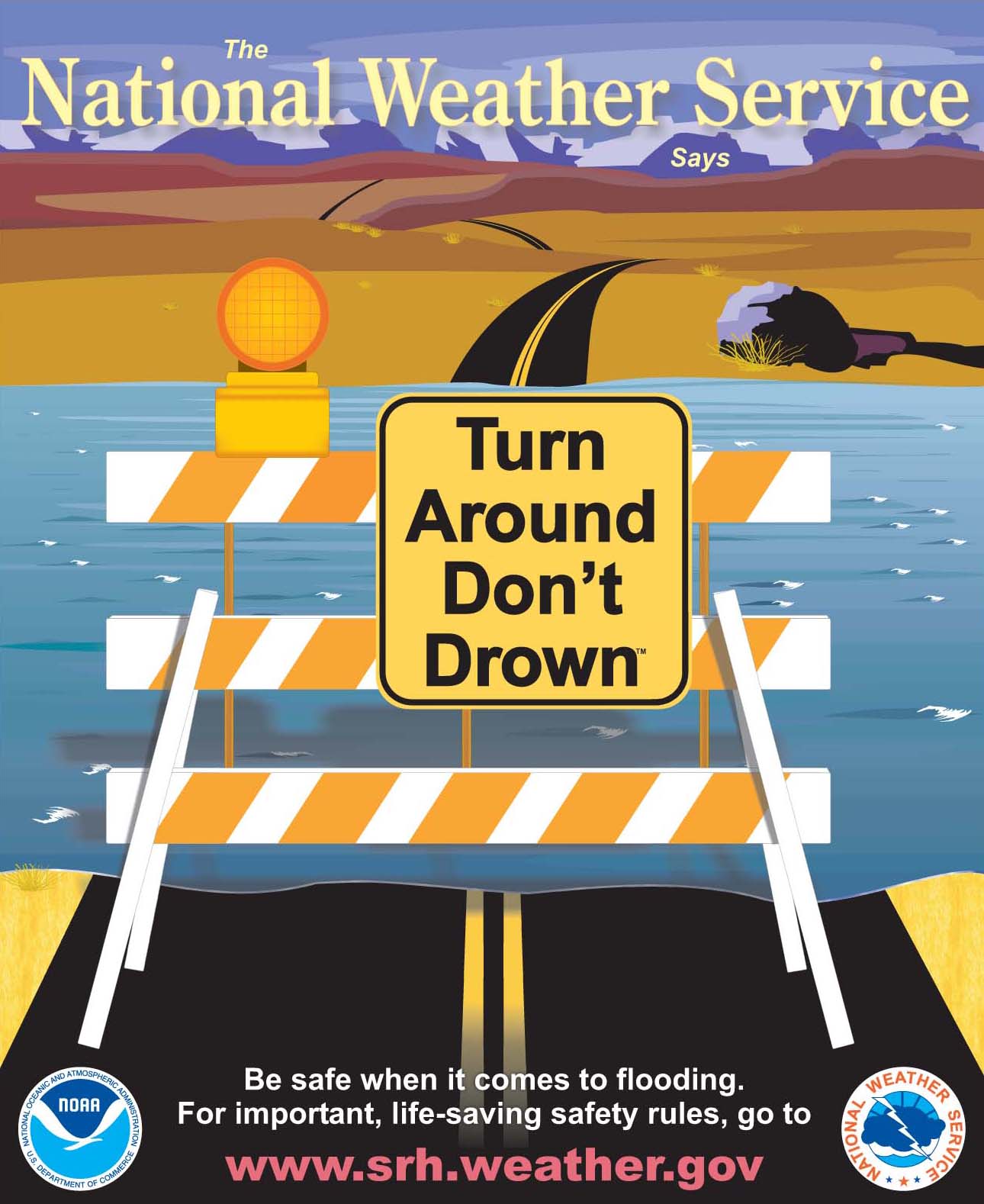
Tropical Storm Imelda has formed near the Bahamas Sunday afternoon, and continues to bring heavy rainfall. The risk of significant wind impacts from Imelda along the Southeast coast are decreasing. Another round of showers and storms with a heavy rain and flash flood threat will continue in the Southwest through Monday morning. Read More >
 |
||||||||||||
|
||||||||||||
| Flash Flood Safety | ||||||||||||
| Turn Around...Don't Drown | ||||||||||||
| A flash flood is a rapid rise of water along a stream or in a low-lying urban area. Flash flooding can result from slow-moving thunderstorms, from numerous thunderstorms which develop repeatedly over the same area, or from heavy rains associated with tropical cyclones. These floods may develop within minutes, depending on the intensity of the rainfall, the topography, soil conditions, and ground cover. | ||||||||||||
|
Flash flooding is the number one storm-related killer in the United States. Why? Most people fail to realize the power of water. Too often, people decide against finding a detour and attempt to pass over a flooded roadway because they believe they can safely make it. Drownings of this nature are 100% preventable simply by not driving or walking onto flooding roads. Most vehicles will become difficult to control in as little as six inches of water and can be swept away in 18 to 24 inches of water. The national 30-year average for flood deaths is around 127 people per year. National Weather Service data also indicates that nearly half of all flash flood fatalities are vehicle-related. The majority of victims are males, and flood deaths affect all age groups. |
 |
|||||||||||
|
So, how can we stay safe from the dangers associated with flash flooding?
|
||||||||||||
| Back to Top | ||||||||||||
|
|
||||||||||||